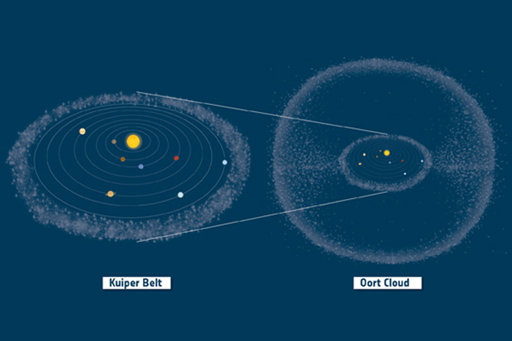4.2.9 Where do comets come from?
There are two types of comet: long-period and short-period. Long-period comets approach the Sun from random directions.
Their elliptical orbits around the Sun can be very steeply inclined to the ecliptic plane, and take more than 200 years to complete. For example, the comet Hale-Bopp, which last appeared in 1997, has an orbital period of about 3000 years. Long-period comets seem to come from the outermost fringes of the Solar System, at least around 50,000 astronomical units away. This region is known as the Oort Cloud.
Short-period comets approach the Sun at fairly shallow angles and have much shorter orbits. For example, Halley’s comet, which was closest to the Sun in 1985, orbits once every 76 years, so will return to the inner Solar System in 2061. Churyumov-Gerasimenko, the comet studied by the Rosetta mission, has an orbital period of about 6.5 years. Short-period comets were once thought to be long-period comets that had been affected by Jupiter’s gravitational pull and moved into different orbits. Now, however, it is recognised that short-period comets come from the Kuiper Belt, the region of the Solar System out beyond Neptune.
Another noted Kuiper Belt object is Pluto. For many years regarded as a planet but now regarded simply as one of the hundreds of thousands of rocky and icy bodies which form the Kuiper Belt.
In the next section you’ll leave the Solar System, to discover exoplanets – planetary systems around stars beyond our own.

